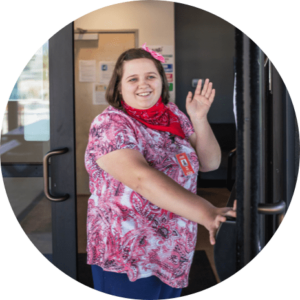Read more about the services ALSO offers to people with intellectual and developmental disabilities.
Read more about the services ALSO offers to people with intellectual and developmental disabilities.
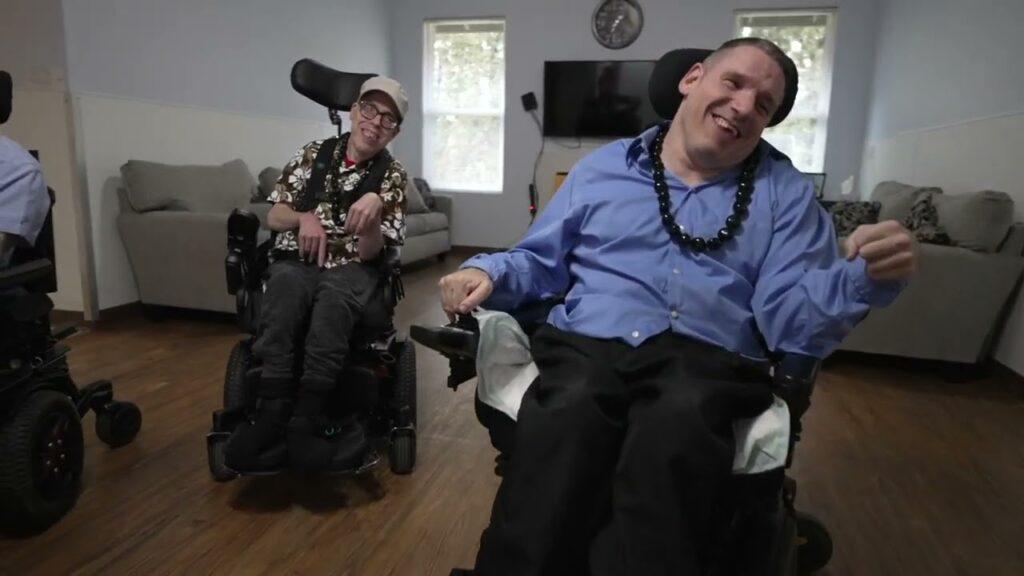
We can’t imagine our lives without our home. Sure, maybe we get tired of trying to keep it clean, and we get frustrated when neighbors get noisy.
But our home is easily a part of our identity. Because having a home means being in a community, having neighbors, having choices and making those choices with a strong sense of self-worth and self-confidence.
ALSO (Advocates for Life Skills and Opportunity) is an Oregon disability support services provider for people with intellectual and developmental disabilities. Throughout our 25-year-plus history, we’ve been advocating for full community inclusion for the people we support in every aspect of life, including housing.
As we all know, our country is facing a severe housing crisis, causing the housing market to get way out of control. These high housing prices have an extremely negative impact on people who are experiencing disabilities.
Collectively, there’s a way to solve the massive problem of housing affordability so that entire communities enjoy the benefits of housing options that are accessible, inclusive, and well-integrated.
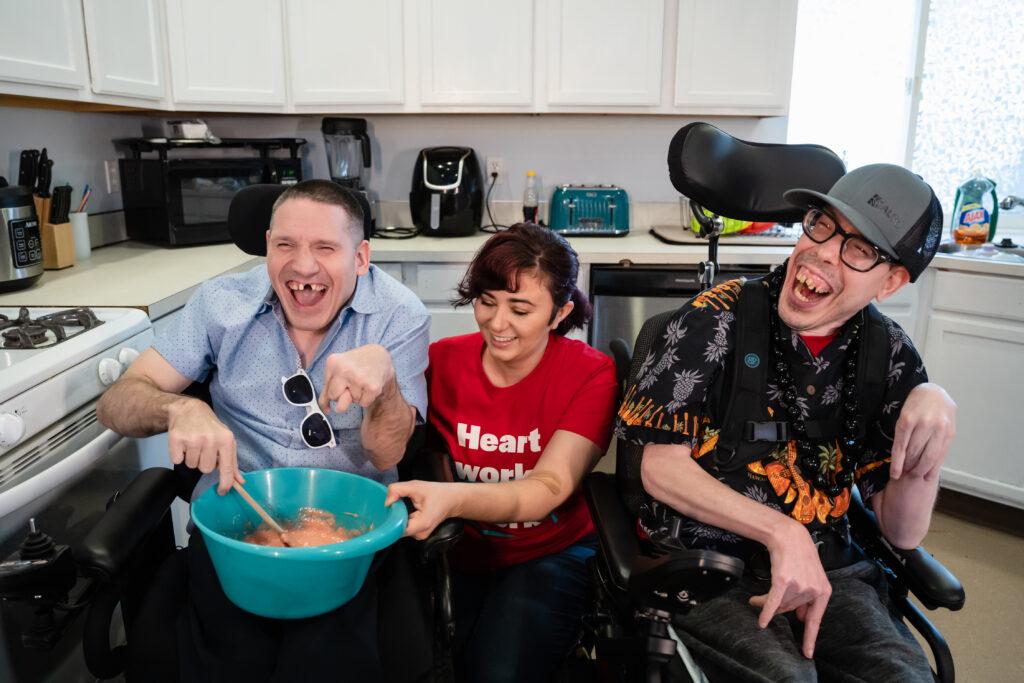
Inclusive housing (also called inclusionary housing) can be described as a wide range of government and local policies1 that allow individuals and families of different backgrounds, needs, and household income levels to live and thrive. It passes zoning laws that encourage housing developers to provide homes at market value, as well as below the median income. The ideal inclusive housing community is a team effort between community members, state and local governments, policymakers, and housing advocates.
This type of housing allows more people who have low to moderate incomes to obtain affordable units (for rental or purchase) that have the same benefits as those with higher incomes, such as:
Of course, a vibrant community like we have discussed is something we all want, right? Well, there used to be an assumption that people with disabilities could not possibly live independently. In particular, people with intellectual and developmental disabilities (I/DD) were housed in large institutions or group homes. They were also often isolated in family homes.
Fortunately, thanks to the work of disability advocates, self-advocates, human services professionals, and families, there has been an increased recognition that people with disabilities are fully capable of living independently.2 The tenacity of these dedicated groups and individuals has led to landmark legislation, such as the Fair Housing Act, and, of course the Americans with Disabilities Act. As the decades go by, more and more people with various disabilities are now able to live and thrive on their own in the community.
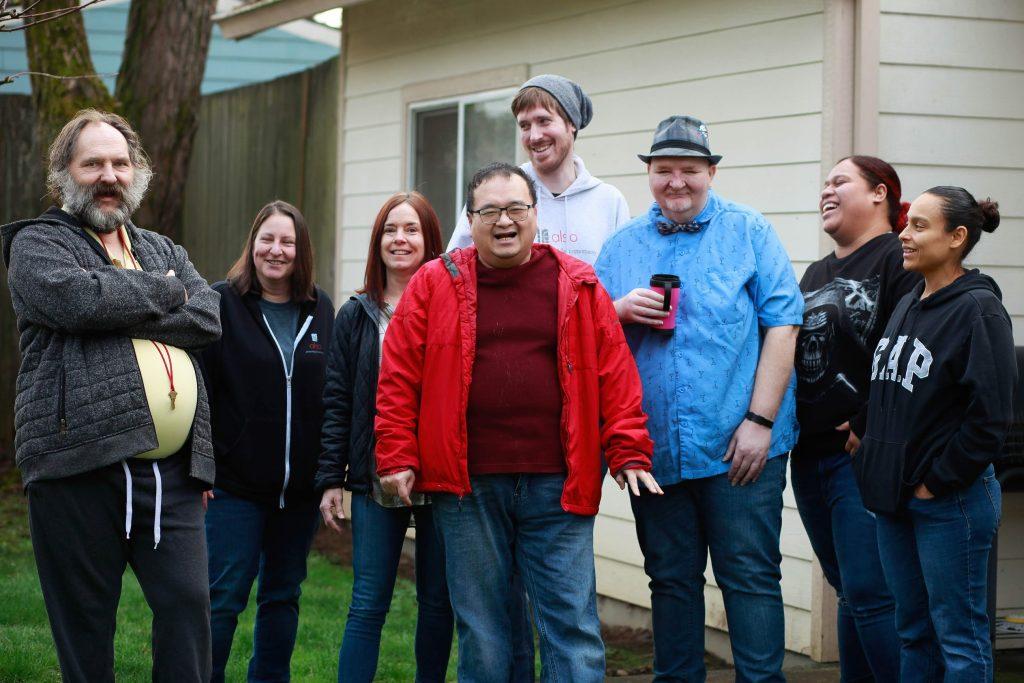
Inclusive housing allows for mobility within the home as well as in the community. We witness inclusive housing in the structure of a community, how community members interact with one another, and accommodations that are made for people of various ability levels.
Inclusively designed homes are those that are built with accessibility in mind. Some examples are:
CHECK IT OUT: Accessible Housing: Sam’s Home Tour
In recent years, there has been more interest in universal design, which is the effort and practice to make the internal and external environment as accessible as possible for people of all ability levels. This concept looks at disability as part of the human condition, not as a diagnosis.3 One example of universal design is the concept of buildings that simply do not have stairs leading up to entrances. All entryways have ramps and rails for people who use walkers, wheelchairs, and even strollers.
CHECK IT OUT: Home Accessibility Solutions for People with Intellectual and Developmental Disabilities
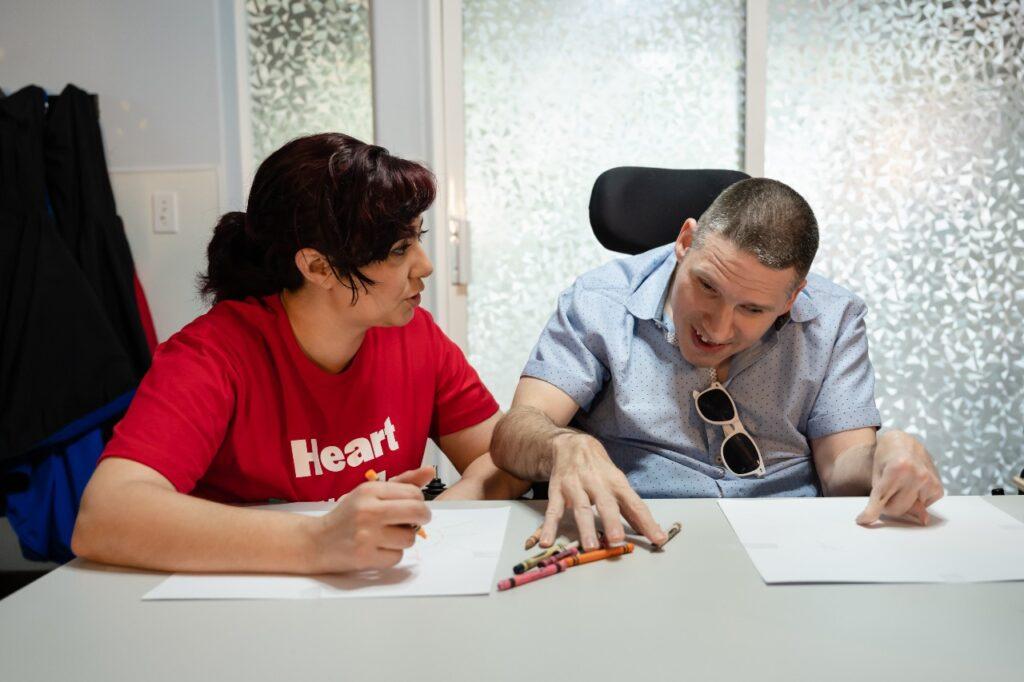
Community integration4 refers to how people of different backgrounds, abilities, ethnic groups, etc. are welcomed into the larger community.
In order to be an integrated, inclusive community, efforts need to be made to involve and welcome people with disabilities into:
In addition, people with disabilities must have equal access to high quality health care, employment, and valued social roles (such as in marriage, teaching, parenting).
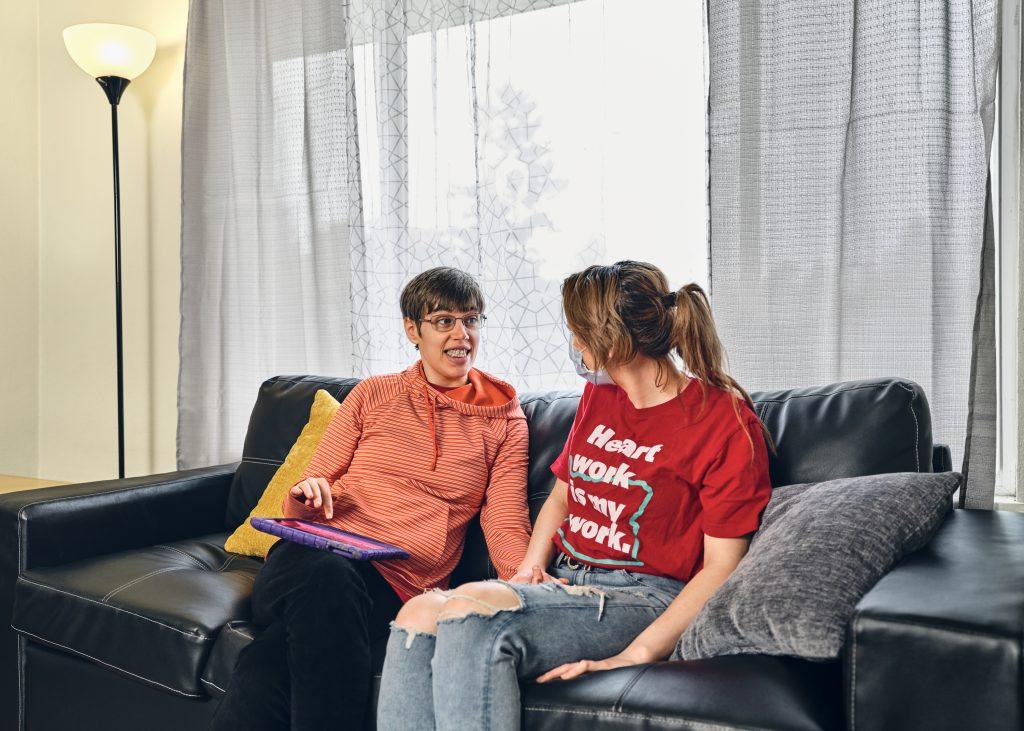
A great example of what a well-integrated community might look like is called Main Street,5 located in downtown Rockville, Maryland. It is an affordable housing project complex with 70 rental units. Renters include people both with and without disabilities. Interviews with residents (with and without disabilities) revealed a high quality of life and satisfaction with Main Street.
Some of the comments by residents are what really tells the story about Main Street. Here are just a couple of comments:
“I have never had an experience where I’ve felt truly at ease or truly at rest like being at Main Street.”
“When I come in in the morning and when I leave at night, not only am I happy to be at Main Street, but everyone is happy to see me, everyone is always engaging.” (page 6)
Essentially, an integrated community is one that reflects the diverse groups of individuals in which it exists. In an integrated community there are no ‘pockets’ or ‘separate sections’ where people of different backgrounds live, work, go to school, and play. There are no ‘gated communities’. In other words, there are no apartment buildings that are only for people with disabilities, people who rely on public housing, people with mental illnesses, or people of specific ethnic groups.
There is definitely an inherent reciprocity between inclusive housing and community integration. Housing – whether it be single-family homes, single or multiple housing units, or even combined workplace-living space, absolutely must be affordable for people who are in a variety of income groups. Even in what we might consider a strong housing market, long-term affordability must be incorporated into any community development plans in order to achieve full community integration and inclusion. Furthermore, they need to be accessible and affordable for people with various disabilities. Only then will communities have:
The embracing of inclusive housing can be a key factor in well-integrated and diverse communities that are vibrant, compassionate, economically stable, and long-standing.
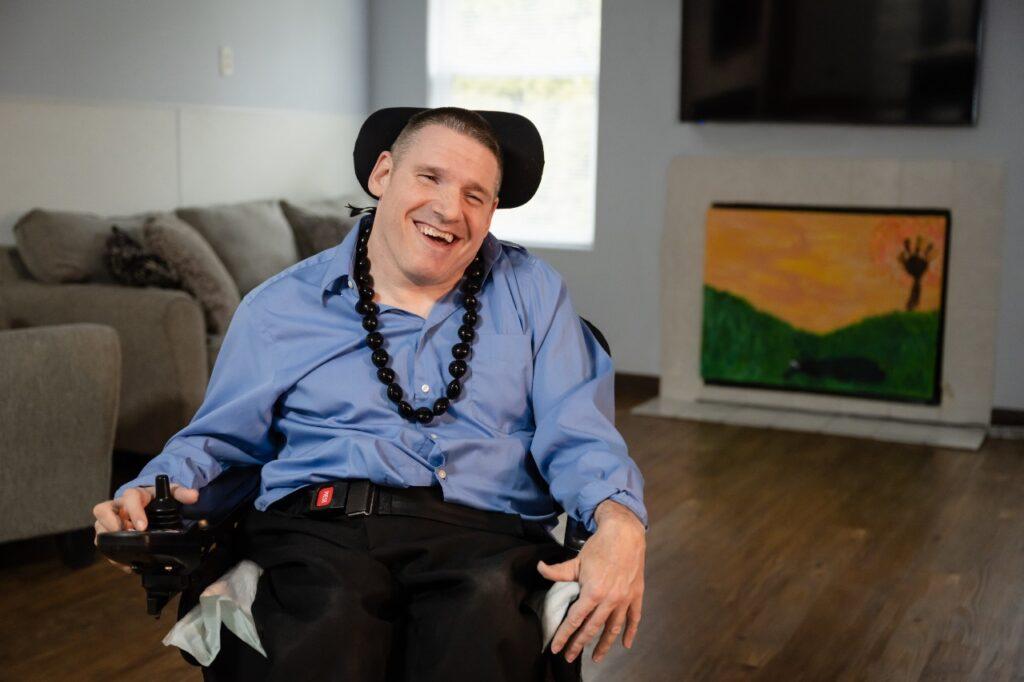
At ALSO, we firmly believe that community inclusion for people with disabilities is a necessary ingredient in vibrant, healthy, and compassionate communities. Let’s talk about how disability inclusion can benefit both the individual and the community. These benefits play out in schools, workplaces, public areas, affecting the very fabric of society.
Research has shown6 that people with disabilities who live in smaller community settings have a better quality of life. This includes:
Sure, we all know that it’s considered good to live in a diverse society…but why? Next time you have a discussion with your neighbor about diversity, you can provide the following reasons:
CHECK IT OUT: The Positive Impact of People with Disabilities on Communities
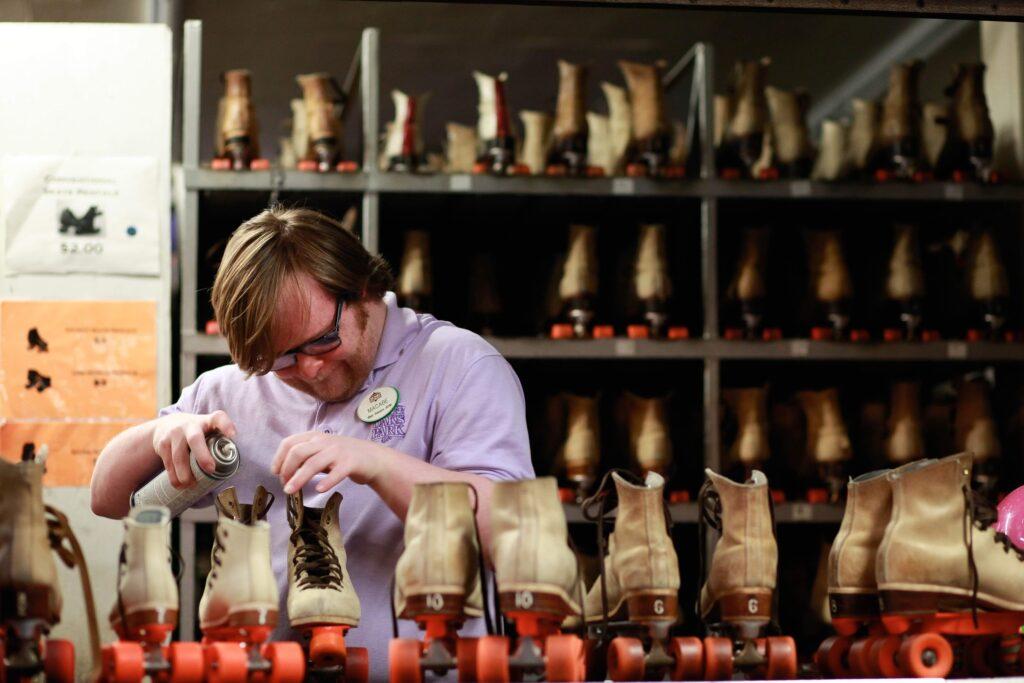
Did you know that the disability market is equivalent to the market in China? Globally, 1.85 billion people with $1.9 trillion in annual disposable income are living with some form of disability. Thus, economic inclusion of people with disabilities is important of any community that wants good financial resources. This is yet another reason why we should value community integration.
Furthermore, people with disabilities can be among the greatest of employees for many reasons, including:
CHECK IT OUT: Benefits of Hiring People with Disabilities.
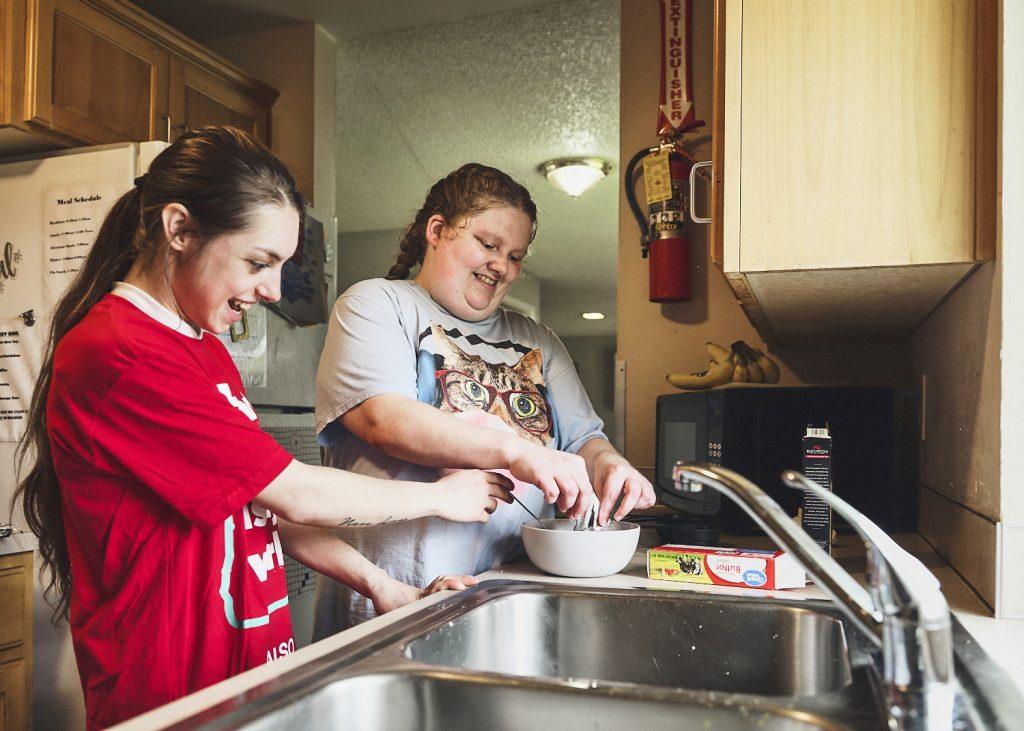
Since the beginning of our existence as a service provider for people with developmental and intellectual disabilities, we have used all of our available resources, dedication, and commitment to community inclusion for those we support. Through local government, supreme court decisions, and other forms of civic engagement, we have met many challenges along the road toward full community inclusion.
The housing shortage of affordable homes for those we support is the latest hill to climb. Home prices have become stubbornly out-of-reach for Oregon residents. This is why we have established ALSO Home, a dedicated initiative to provide affordable housing for people with I/DD. Our goals include:
As with everything we do, we commit to being strong advocates for inclusionary housing policies. Our vision for the future includes ALSO Apartments: 38 affordable housing units, including 1 unit for enhanced accessibility and 10 units with a preference for people with I/DD.
We’re excited to tell you more! Go to ALSO Home to discover all about our initiative.
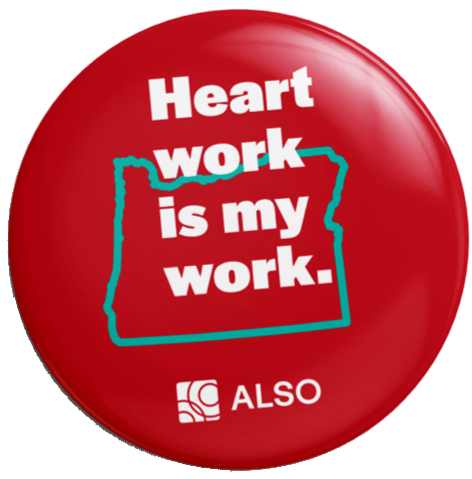
Sign up for our newsletter to get our latest news, content, and job opportunities.
Help us ensure that everyone has the same opportunities in their home, workplace and community. Let’s make dreams!
